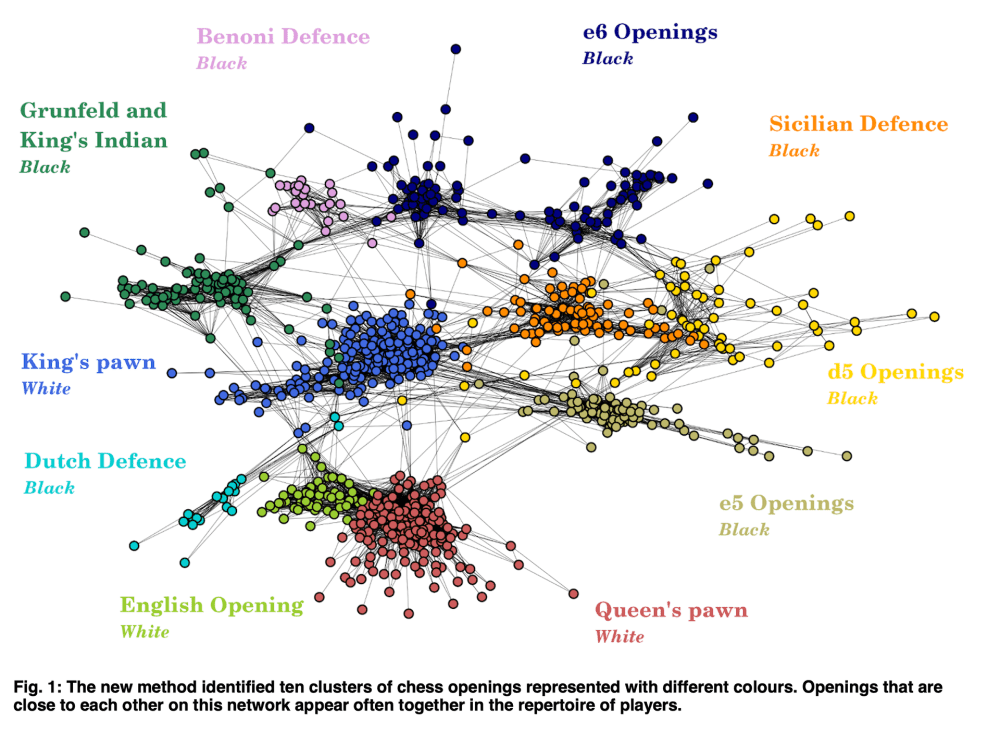A chess opening refers to the first moves that take place in a game, which among professionals usually adheres to one of a handful of “book” openings that have been studied and are well-known. While the uninitiated start shifting pawns with beads of sweat on their brow, competitive players often lean on a tried and tested chess opening, but new research has given these moves a new set of classifications that could be used to suggest the best chess openings for beginners.
The new chess opening classifications are based on research into over 3 million games of chess played on a free online platform called Lichess. The 3,746,135 games were played by 18,253 players and included 988 different chess openings.
The data sample focused on players with a high score on the chess platform, as the random approaches of more novice players could skew the results away from considered chess openings. An algorithm-assisted analysis revealed 10 clusters of chess openings, three that centered around the White’s first move, and seven that covered Black’s most common responses.
In the past, the ECO Code (Encyclopaedia of Chess Openings) has been used to classify chess openings, dividing them into five main groups: A, B, C, D, and E. The researchers note that their data-driven network-based approach yielded different groupings that uncovered hidden similarities between chess openings not included in the traditional ECO Code, but that this old system still has merit.
The researchers believe the clusters could be used to suggest chess openings for beginners. Image credit: © Complexity Science Hub
“Since this has evolved historically, it contains very useful information,” said Vito Servedio, of the Complexity Science Hub, in a statement. “Our clustering represents a new order that is close to the used one and can add to it by showing players how similar openings actually are to each other.”
The researchers defined a relatedness network to establish chess openings that were similar to play style, their difficulty, and which were the most likely to be chosen based on the players’ skill levels. Identifying the easier openings was based on how common they were, so they looked for which opening styles were used the most and by who. Their conclusions as to which opening styles were the easiest, and therefore played by the least experienced players, revealed a significant correlation with the players’ skill ratings on the Lichess platform, supporting their validity.
“The analysis discussed in this paper paves the way for devising personalized recommendations for chess players. By utilizing the opening network, it is feasible to suggest to players which openings they can learn with ease,” concluded the study authors. “Furthermore, taking into account their fitness and the complexity of openings, such recommendations can be tailored based on players’ skill level.”
“These tools can be helpful not only to scientists interested in studying the game of chess but also to any chess player who wants to improve their opening repertoire.”
The study is published in Scientific Reports.
Source Link: New Cluster Classification System Can Suggest The Best Chess Openings For Beginners
